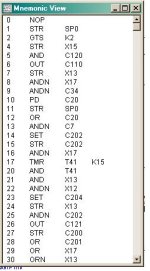ayman metwally
Lifetime Supporting Member
Hello,
A few days ago, I was doing a presentation about our company's activities and I was talking about our SCADA solutions.
Someone asked me: Does your SCADA system supports "Machine state equivelant"? (or something like that!!)
It was the first time I hear the word!
So did anybody here ever heared about this thing? (There is a probability that this person is mixing things!)
Thanks in advance
A few days ago, I was doing a presentation about our company's activities and I was talking about our SCADA solutions.
Someone asked me: Does your SCADA system supports "Machine state equivelant"? (or something like that!!)
It was the first time I hear the word!
So did anybody here ever heared about this thing? (There is a probability that this person is mixing things!)
Thanks in advance
Last edited:








